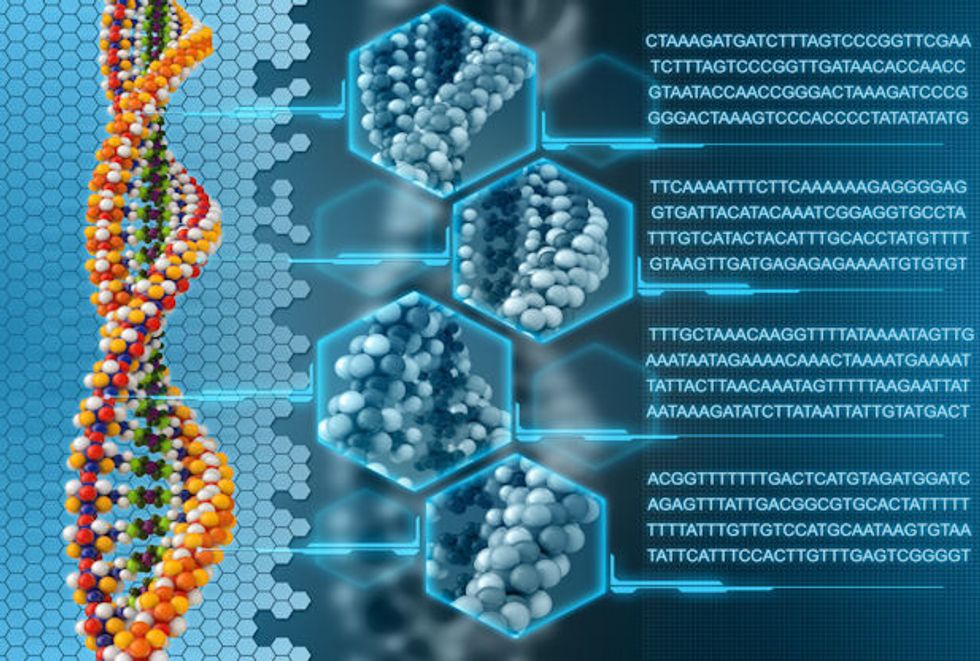Keoni Gandall, an 18-year-old research fellow at Stanford, has eschewed video games and team sports in favor of using advanced lab equipment to perform DIY gene editing. Using the widely available CRISPR/Cas9, Gandall wants to clone DNA and eventually make full genomes at home. The availability of this technology represents a new democratization of science, a science that can be performed anywhere by anyone relatively cheaply. That said, there’s always a price associated with this type of freedom.
As barriers to entry to the scientific community are torn down, the world is exposed to the ideas and experiments of people outside of genetic science’s traditional university setting. That said, more ideas don’t necessarily mean better ideas. Biotech firm Ascendance Biomedical seemed committed to proving this point when their CEO Aaron Traywick injected himself with a DIY herpes medication in front of a crowd in Austin this February. This is the same company that urged Tristan Roberts to inject himself with an untested gene therapy to treat his HIV. Neither of these experiments worked, but they do paint an interesting picture of what we can expect in the future. Ease of access combined with relatively lax FDA standards about testing experimental medicines on oneself will eventually give rise to more companies like Ascendance Biomedical. Sure, this may present a sort of minor competition with Big Pharma with regard to curing certain diseases, but the danger of injecting oneself with a mystery cocktail created by someone with a few thousand dollars worth of gene-editing technology cannot be overstated.

Still, incompetent gene editors like Traywick are a bigger danger to themselves than others. The real concern with the dissemination of this technology is the potential for it to be used in the manufacturing of homemade biochemical weapons. Recently, researchers at the University of Alberta were able to recreate Horsepox, an extinct relative of the smallpox virus. It only cost them $100,000, and it took about six months. While this price point will keep hobbyists like Gandall from reproducing extinct diseases, the lack of government oversight regarding the University’s experiment is frightening. Genetic science is improving at a rate faster than legislation regulating DNA experimentation can be churned out. In the wrong hands, the dangers associated with viral editing are incalculable.
Back in 2016, researchers at MIT invented a programming language that allows them to design and edit DNA. Supposedly, anyone fluent in this language is able to generate and edit a DNA sequence from their computer. Before this language was invented, advanced gene editing required years of experience. According to scientists at MIT, now anyone with some programming skills can create, edit, and model DNA. According to MIT professor Christopher Voigt, “it is literally a programming language for bacteria.” The medical applications are seemingly endless, but there are concerns regarding accessibility. If every person with a computer has the ability to design new genetic material, biological attacks won’t just increase in number, their origins will also become more and more difficult to trace.
 Analysis of DNA’s nucleotides
Analysis of DNA’s nucleotides
While the growing anxiety surrounding biohacking is certainly warranted, there are plenty of professional geneticists out there who don’t seem to be worried, and most of them don’t believe that DNA sequencing is anything like a computer language. Synthetic biologist Sarah Richardson believes that this line of thinking has given bioengineers unrealistic expectations saying, “any analogy that ignores or downplays the fundamental rule of biology — that a cell makes imperfect copies of itself — is going to lead down a frustrating and unproductive path.” According to her, we haven’t even learned what some of our genes do, and that those worrying about the rise of biohacking are being tricked into fear. Scientists are quick to admonish the risky and often outright stupid Garageband biohackers out there, because as of right now, there’s still a ton that our top geneticists don’t know. We only finished mapping the human genome 15 years ago. Hell, it’s only been 65 years since we discovered DNA. We’re just not at the point where people with little-to-no real lab experience can accurately sequence and edit DNA from their basement. Still, the time is coming when this type of DIY genetic editing will be possible and accessible, which is why many in the bioethics community are arguing that t we need to start having the conversation now–while biohacking is in its infancy–so we can draw up preemptive legislation. One can only imagine the damage Aaron Traywick’s could do if this technology were more advanced.
- Ellen Jorgensen: Biohacking — you can do it, too | TED Talk ›
- Extreme biohacking: the tech guru who spent $250,000 trying to live … ›
- 7 Biohacks That Actually Work – The Atlantic ›
- 7 Biohacks That Actually Work – The Atlantic ›
- Biohacking for Beginners: How to Start Biohacking | Tony Robbins ›
- Biohacking: Definition, Safety, and Top 11 Hacks for Beginners ›
- What is biohacking and why should we care? | PBS NewsHour ›
- What is biohacking? The new “science” of optimizing your brain and … ›
- Luli Radfahrer | Biohacking e Transhumanismo com Luli Radfah… | Flickr ›
- BioHacking: Bioterrorism is inevitable | Imgp5781.Jpg | Duncan … ›
- Biohacking World Map | Tacks are hammered into a map of the … | Flickr ›
- Matt Dippl – Biohacking @ Quantified Self #8 | Quantified Se … ›
- Biohacking Your Employees | Nikolas Badminton | DisruptHR Talks on … ›





